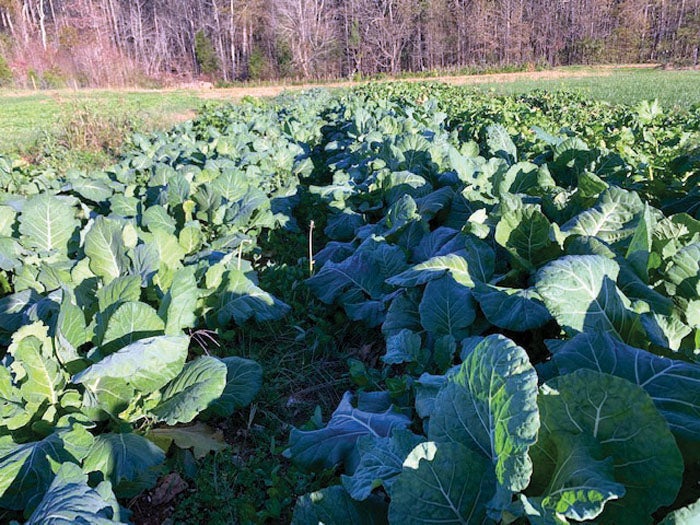Extending vegetable seasons in the central Piedmont
Published 12:00 am Sunday, November 29, 2020

- A healthy, mature collard patch can produce leaves all winter long
By Michael Fine
N.C Cooperative Extension
Every year, my family embarks on a challenge to extend our winter vegetable season later into the winter than the previous year. In 2013, our first growing season, we met our end by mid-August. The next season, we had vegetables in late September. And each year, for the past seven years, we managed to extend our season for an additional month into the winter. To accomplish this, we focused on three key elements that helped us prolong our winter vegetable supply. They consist of:
1. Planting on time
2. Good germination in mid-August
3. A frost protection plan
Planting on time
Planting your desired crop on time consists of knowing the variety’s “days to maturity.” The days to maturity indicate the time from which the seed germinates until the time that the plant is ready for harvest. In the fall, the growers’ intent is to have a robust, full-grown, vegetable plant by the time their local region reaches the “10-hour day.” The 10-hour day refers to the day that there are only 10 hours of daylight available to plants for photosynthesis. For our area, this arrives roughly around Thanksgiving. At this point, many plant species significantly slow down their productivity and go dormant.
Many vegetable plants do not, however, die and decay away. Rather, they will hold their vitality and nutritional value through the cold winter months until the grower wishes to harvest. These crops include the following:
Good winter hardy crops for central Piedmont
• Collards
• Kale
• Cabbage
• Broccoli
• Spinach
• Turnips
• Beets
• Carrots
• Rutabaga
Good germination in mid-August:
As we start setting planting dates on our fall calendar, we notice that many vegetables have planting dates that are in mid-August and even late July. The late summer “dog days” are not the most ideal weather conditions for germinating cool-season vegetable seeds, but for many long-season varieties such as cabbage, broccoli, and Brussels sprout, it is necessary to seed this early in advance. To mitigate the heat and potentially dry conditions, we keep transplant seedlings under a 50% shade cloth and water frequently. For direct-seeded crops, we install overhead sprinklers or drip-tape in order to cool and moisten the soil. Once we manage to germinate a good stand of seedlings, we direct our focus to irrigation for the next two weeks. At the end of the two weeks, if the leaves look healthy and the roots have “clung” to the soil, the plants should grow well heading into fall.
A frost protection plan
Once we have a good stand of young plants established by early fall, our attention then shifts to the next danger, an early-season cold-snap that could freeze young plants. I recommend investing in 1.5-ounce row covers. They are made of lightweight synthetic fibers woven together to create a thin blanket that can drape directly over plants. They are usually weighed down by placing weights around the perimeter. Row covers keep our plants alive through a quick cold-front that may only last one night. After which, the covers can be removed and our still-living plants are free to emerge and grow again. It is not uncommon in the late fall and early winter to take the row-covers on and off multiple times as the weather patterns deviate.
For more information on this topic, feel free to reach out to your N.C. Cooperative Extension Agent at 704-216-8970 or by email at mofine@ncsu.edu .



